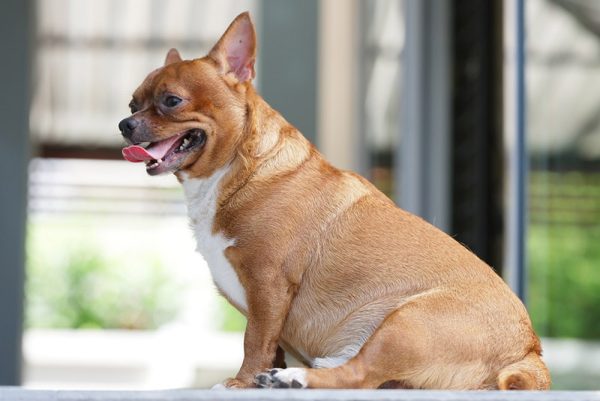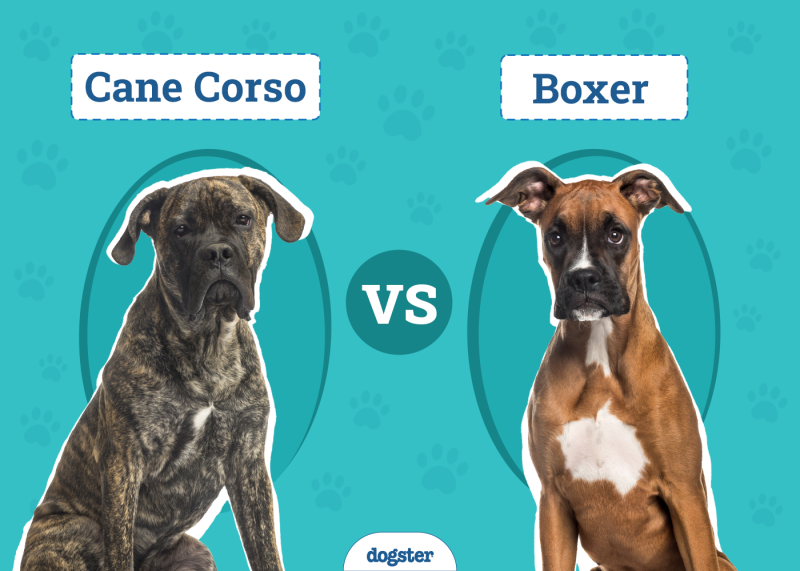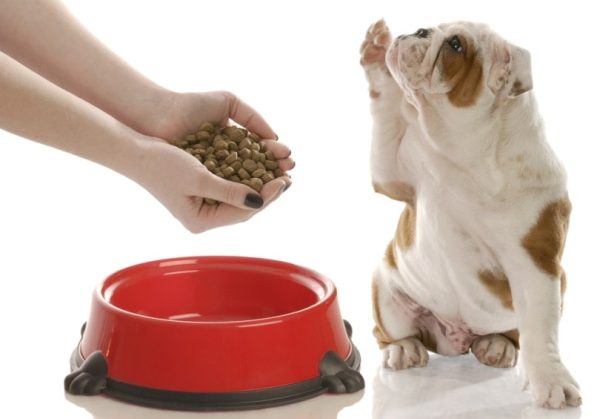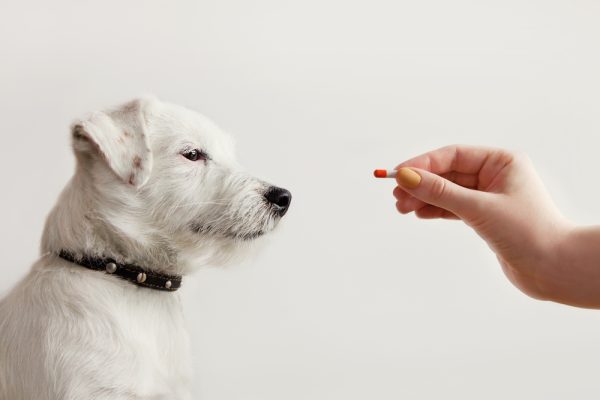If you own a dog, accidents of some sort are unavoidable. Whether it’s during housetraining or when the dog is older, most dogs will have accidents eventually. It isn’t uncommon for sick or elderly dogs to lose control of their bowels, for instance, which can also lead to accidents.
Luckily, when your canine does have an accident on the carpet, you aren’t stuck with the stain and smell forever. There are a number of ways to remove the odor and make your carpet look clean again. Plus, many of these techniques can be done with items that you may already have lying around the house.
Below, we’ll take a look at the most effective and easiest way to remove dog poop stains from carpets, as well as the smell that comes with them.

Before You Start
Before you start, do not rub the spot where you are removing solid waste. Just pick up what you can. Do not scrub. If you do, you’ll likely only spread the stain around and move it deeper into the carpet, which will make matters worse. Gentleness is key here.
How to Remove Dog Poop Stains & Smells Out of Carpet (4 Ways)
1. Enzymatic Cleaner
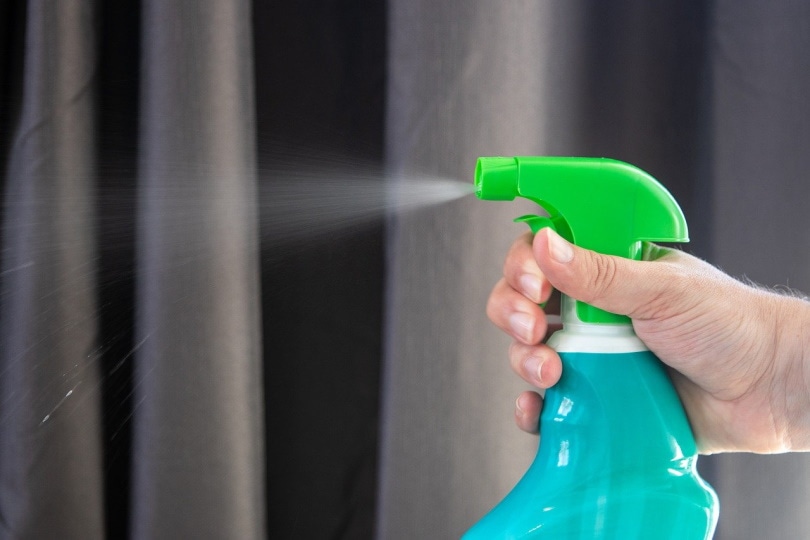
If you’re looking for a commercial option, you may want to consider an enzymatic cleaner. This type of cleaner is great for urine stains, but it can also be useful for poop stains. As the name suggests, this type of cleaner is full of enzymes that literally eat the stain and odor-causing bacteria. Therefore, this cleaner is much more effective than most other pet cleaners on the market. You can find enzymatic cleaners at most pet stores and online. While they may all have slightly different components, most of them work very similarly.
We recommend following the directions on the back of the bottle for the best results. Often, this will include spraying the area and then waiting a bit for the cleaner to work. Next, you’ll have to blot the cleaner up. You can use enzymatic cleaners with any of the DIY methods we’ve mentioned above. If you decide to use two methods, we recommend using this one last so that it can clean up all the leftover bacteria.
Review the back of the bottle for rinsing instructions. Sometimes, the instructions will ask you to rinse. Other times, they will not. If you use vinegar or dish soap as well, you’ll likely need to rinse anyway.
Our Favorite Cleaner Hepper Advanced Bio-Enzyme Pet Stain & Odor Eliminator Spray is our favorite all-purpose cleaner for pet messes. It permanently lifts the very worst stains and odors, making clean-up and accident prevention a breeze. Hepper offers a 100% guarantee, which is a great bonus! Learn more about it here. At Dogster, we’ve admired Hepper for many years, and decided to take a controlling ownership interest so that we could benefit from the outstanding products of this cool pet company!
Rating
Image
Product
Details
Best Enzymatic Cleaner
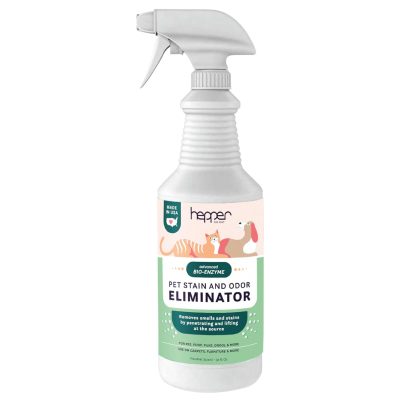
Hepper Advanced Bio-Enzyme Pet Stain & Odor Eliminator Spray
Check Price
2. Vinegar
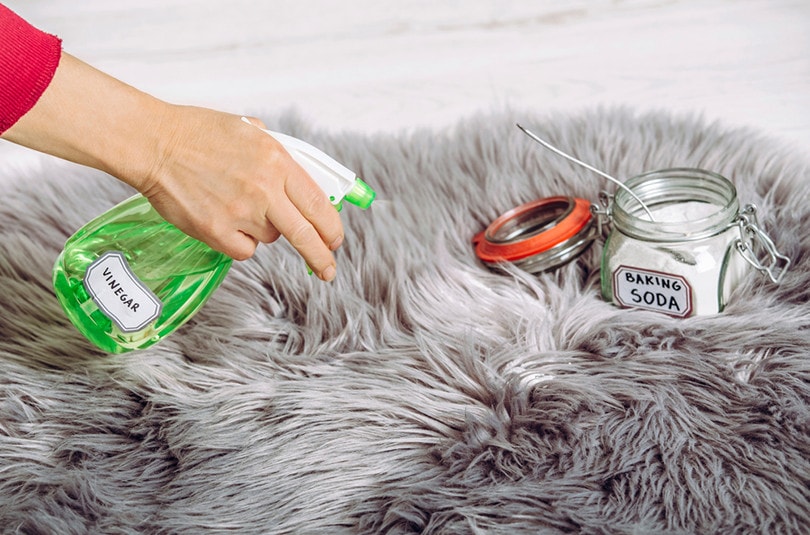
Vinegar is a great cleaner as well, especially when it comes to odors. You can utilize it to make an at-home cleaner that is more powerful than most of the things you’ll purchase commercially.
All you need to do is heat the vinegar in a pot until it is steaming but not necessarily boiling. Then, put about one tablespoon of vinegar into 2 cups of water. Put the mixture in a spray bottle or pour it directly over the stain.
Next, let the solution sit for a few minutes or so. It should be cool by this point. Then, blot it gently with an old towel or paper towel. Do not rub, as this can make the stain simply move deeper into the carpet. Your main goal should be to remove all of the vinegar, not scrub the carpet clean.
Now, you should notice that some (if not all) of the stain is gone. You may need to do this more than once to ensure that the whole stain is removed.
Take it slow and carefully. You don’t want to agitate the stain.
3. Dish Soap
Surprisingly, dish soap is a very good cleaner in most circumstances, including dog stains. You can simply mix it with warm water for a great solution to most stains. You’ll want about 1 tablespoon of dish soap for every 2 cups of water. Just be sure that your dish soap doesn’t contain any bleach, as this can often do more harm than good.
You’ll want to use the dish soap in a similar way to vinegar. Add it to warm water in a bowl or spray bottle, and then apply it to the stain. Let it sit for about 10 minutes to do its job, and then blot it up.
Because dish soap is bubbly, you’ll likely need to rinse it carefully to ensure that it is all removed. While this does add some extra steps, it will help get the stain completely out as well, so it won’t all be for nothing.
To rinse, simply pour more cool water on the stain and blot it back up. Repeat this until the blotting and pouring aren’t producing any more bubbles. We recommend rinsing at the very end of cleaning, so if you’re using multiple cleaning methods, wait until you’re completely done.
You can also add dish soap to the vinegar solution we described above and use both methods at the same time. This is often extremely effective. If you decide to go this route, you’ll want to use a tablespoon of dish soap and a tablespoon of vinegar in 2 cups of water.
4. Baking Soda
When it comes to practically any stain, baking soda is your best option. It’s the holy grail of home cleaners and should work wonders on most dog poop stains. As a moisture-absorbing starch, baking soda will absorb the stain and the odors that go with it – and then you can simply vacuum it up.
Using baking soda on a stain is fairly straightforward. Simply sprinkle baking soda on the stop so that it covers the stain. You don’t want it to mound there—just cover the surface. Then, you’ll want to let the baking soda sit for as long as possible. Overnight is often best. However, you do not want to allow pets or children to access the area while it’s sitting, as baking soda can be toxic if too much is consumed.
Once the baking soda has been allowed to sit, you can vacuum it up.
However, the most effective way to remove pet stains and odors from any surface is going to be a pet-friendly enzyme cleaner.
Conclusion
It can be very frustrating when our canines have accidents on the floor. However, it does not mean that your carpet is going to be permanently stained or smelly. With the methods above, there are no stains that you can’t remove from your carpet. They’re that effective.
When you are cleaning, we do recommend keeping animals and children out of the area. While most of these methods are not toxic, they can still be a bit much for smaller animals and people. Baking soda is only toxic in very high amounts, but small dogs may consume too much if they start licking the baking soda you apply to the floor. It isn’t something that you want to risk.
Furthermore, you should only work in a well-ventilated area. Enzymatic cleaners and vinegar are often very smelly and can have some potent fumes. Baking soda and dish soap are not nearly as bad, though, and can often be used without ventilation.
In the end, using more than one method is often the best choice. In this case, we recommend using vinegar and dish soap first in the same solution, moving on to an enzymatic cleaner, rinsing, and then using baking soda. While this may seem like a lot, it will leave you with an extremely clean carpet.
See Also:
- How to Get Rid of Pet Odors in Carpets: 5 Possible Ways
- How to Get Dog Pee Smell Out of Carpet Without Vinegar? (5 Methods)
Featured Image Credit: schankz, Shutterstock






